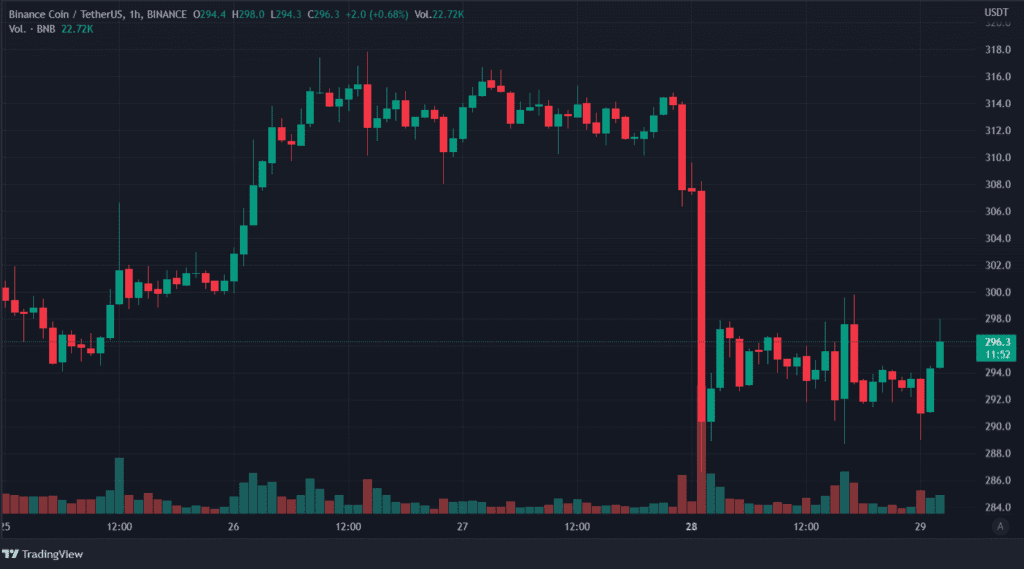A significant outflow of funds belonging to Binance set off alarms in the cryptocurrency community today.
According to a Tweet from Whale Alerts, the exchange pulled out more than 127,000 BTC in a single transaction, depositing the coins in an anonymous wallet address.









127,351 #BTC (2,062,504,721 USD) transferred from #Binance to unknown wallethttps://t.co/zNYPuJuoRe
— Whale Alert (@whale_alert) November 28, 2022
Of course, it was to be expected that, given the circumstances, FUD and nervousness would reign in the community. With exchanges rushing to conduct their own proof of reserves and some businesses moving large amounts of money into private wallets before shutting down, the chances of thinking the worst were more than justified.
The Mysterious Move Was Seeking to Prove Binance’s Transparency.
However, shortly after that, the CEO of Binance clarified that it was all just a test required by an independent auditor to prove that the exchange actually controlled the tokens it claimed to have:
This is part of the Proof-of-Reserve Audit. The auditor require us to send a specific amount to ourselves to show we control the wallet. And the rest goes to a Change Address, which is a new address. In this case, the Input tx is big, and so is the Change. Ignore FUD! https://t.co/36wUPphIZk pic.twitter.com/2NkH5L5J9j
— CZ
Binance (@cz_binance) November 28, 2022
CZ’s clarification calmed speculators’ spirits, halting a sharp drop of more than 5% experienced at 1am UTC.

Binance performed the proof by transferring exactly 127,351 Bitcoins, equivalent to approximately $2 billion at the time of writing this article. The anonymous wallet that received the funds was also owned by the exchange.
The world’s largest cryptocurrency exchange points out that it had to do this test as a way to provide transparency and vindicate absolute control of its assets. The auditor sought to prove that Binance indeed was able to move a large sum of money without affecting its operability.
Proof Of Reserves And The Need To Regain Trust
Due to the FTX collapse, several exchanges have filed solvency reports to prove that their users’ funds are backed up.
And the methods have varied. While Binance initially opted for the exclusive use of Merkle trees, others, like Grayscale, have flatly refused to carry out the procedure for security reasons. However, others, such as the Mexican exchange Bitso, published its own version of an extended proof or reserves, pledging to implement other measures to increase its reliability, including zero-knowledge tests, external audits, conversations with regulators, and publication of periodic reports.
But there are also critics of current reserve testing implementations. The most recent example is former Kraken CEO Jesse Powell, who criticized Binance’s failure to implement external audits and include liabilities in its reports.
I’m sorry but no. This is not PoR. This is either ignorance or intentional misrepresentation.
The merkle tree is just hand wavey bullshit without an auditor to make sure you didn’t include accounts with negative balances. The statement of assets is pointless without liabilities. https://t.co/b5KSr2XKLB
— Jesse Powell (@jespow) November 25, 2022
Even with all this effort, there seems to be a decline in trust. Hardware wallets are reporting record sales, centralized crypto exchanges are now managing less funds, and self-custody wallets are on the rise.
The post Binance Moves Over $2Bn in BTC As Part of a Proof-of-Reserves Audit appeared first on CryptoPotato.
from CryptoPotato https://ift.tt/238tBek
0 Megjegyzések